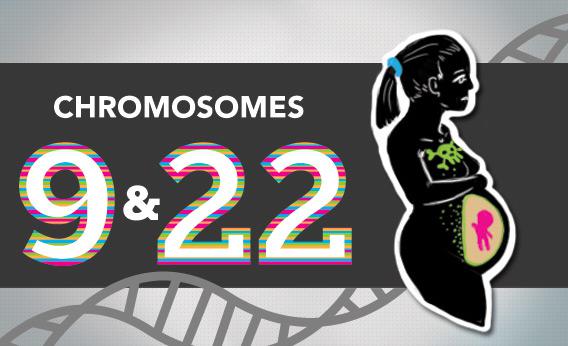In December 2005, after 40 weeks and five days of pregnancy, a Japanese woman named Mayumi gave birth to a baby girl named Emiko. (I’ve changed the names of family members for privacy’s sake.) Mayumi was 28 years old and her blood work and sonograms seemed normal throughout the pregnancy. The delivery and its aftermath were also routine. The medical team took some blood from Emiko for testing (everything looked good), and cleared the mucus from Emiko’s mouth and coaxed her into her first cry. They clamped and cut her umbilical cord, her lifeline to her mother’s placenta, and it soon dried out and left her with a belly button. Mayumi and her husband left the hospital in Chiba, a suburb across the bay from Tokyo, a few days later with Emiko in their arms. All perfectly normal.
Thirty-six days after giving birth, Mayumi began bleeding from her vagina. Three days later, she developed a fever. With a newborn to take care of, the couple toughed out Mayumi’s spell at home for a few days. But within a week, the bleeding became uncontrollable, and the family returned to the hospital. Because the wound would not clot, doctors ordered a round of blood work on Mayumi. The news was grim: Mayumi tested positive for a leukemia called ALL, which is caused by a genetic defect called a Philadelphia translocation.
As we saw in an earlier post, one unique feature of mammals is the long stretches of superfluous DNA within their genes, stretches our cells must cut out piece by piece. The ALL Philadelphia translocation (named for where it was discovered in 1960) takes place when two exceptionally long stretches of superfluous DNA—a 200,000-letter stretch within a gene on chromosome 9, and a 68,000-letter stretch within a gene on chromosome 22—get tangled up, and the two chromosomes accidentally swap DNA. This swap ends up fusing together two genes that should never be fused, and the resulting monster hybrid protein promotes the uncontrolled division of blood cells—cancer. Mayumi’s doctors started her on chemotherapy, but she did not respond well. Her weakened immune system could not fight off a brain infection, and she began to suffer seizures.
Meanwhile, the doctors examined Emiko. ALL is a swift cancer but not that swift: Mayumi almost certainly had it when pregnant with her. Emiko, however, showed no signs of cancer, which made sense. Roughly 1 in 1,000 women do come down with some form of cancer while pregnant, but even aggressive, metastasized cancers should never penetrate to the fetus because of the placenta, which sets up a barrier between mother and fetus and blocks rogue cells. The placenta seemed to have done its job here, and Emiko was sent home.
Only to return at age 11 months. The once-bouncing girl suddenly had fluid in her lungs and, more troublesome, a fever-red mass disfiguring her right cheek and chin. On an MRI, this jowl looked enormous—as large as Emiko’s brain. (Try expanding your cheek as far as it will go, and its size still wouldn’t be close.) Based on its location within the cheek, the Chiba doctors diagnosed sarcoma, cancer of the connective tissue. But with Mayumi in the back of their mind, they consulted some experts in Tokyo and England, and decided to screen the tumor’s DNA, to see what they could find.
They found a Philadelphia swap. And not just any Philadelphia swap. Again, the Philadelphia crossover takes place along stretches of junk DNA many thousands of letters long, and chromosomes 9 and 22 can theoretically cross over at any point along those stretches. But the DNA in both Mayumi and Emiko’s cancer had crossed over at the same spot, down to the same letter. This wasn’t chance. Despite lodging in Emiko’s cheek, the cancer was basically the same. For more confirmation, her doctors pulled out the routine blood-spot card taken from Emiko at birth and tested it carefully. It revealed that the cancer had been present even then—mother and child had had cancer simultaneously.
This discovery raised a whole new set of horrifying questions—most importantly, it was no longer clear who gave cancer to whom. After all, mother and fetus are so tightly bound together that questions of cause and effect get tangled up, too. Perhaps the fetus actually gave the cancer to the mother here. Perhaps they’d both been exposed to unknown carcinogens. Perhaps it was just a sickening coincidence—two strong genetic predispositions for cancer going off at once. After consulting the medical literature, the doctors found a few dozen similar cases of simultaneous mother-fetus cancer, dating back to Germany in the 1860s. Unfortunately, the old medical reports were spotty and couldn’t resolve the ambiguity of who gave cancer to whom.
The Chiba doctors, however, working in 2006, had a tool no previous generation did—genetic sequencing. Sequencing revealed that Emiko’s normal (non-tumor) cells did not show a Philadelphia translocation. So Emiko had not inherited a predisposition to this cancer; it sprung up sometime between conception and the delivery 40 weeks later. What’s more, Emiko’s normal cells showed, as expected, DNA from both her mother and father. But her cheek cancer cells contained no paternal DNA; they were pure Mayumi. This proved, indisputably, that Mayumi had given cancer to Emiko, not vice versa.
Whatever sense of triumph the scientists might have felt, though, was muted. In virtually every other historical case in which a fetus and mother came down with cancer simultaneously, both had succumbed quickly, normally within a year. And even scientifically, some small things kept nagging them. How could Mayumi’s cancer cells have gotten by the placenta? Why hadn’t Emiko’s immune system destroyed them? The geneticists decided to take a closer look at the cancer cells’ DNA, and as we’ll see tomorrow, that’s when the case really got weird.
